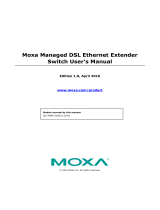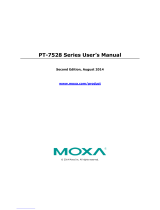
Table of Contents
1. About This Manual ................................................................................................................................ 5
Symbols for the Meanings in the Web Interface Configurations .................................................................... 6
About Note, Attention, and Warning ......................................................................................................... 7
Configuration Reminders ........................................................................................................................ 8
A: About Mandatory Parameters ....................................................................................................... 8
B: Configurations before Enable/Disable ............................................................................................ 8
2. Getting Started ..................................................................................................................................... 9
Log in by Web Interface.......................................................................................................................... 9
Connecting to the Switch ............................................................................................................... 10
Log in by RS-232 Console ..................................................................................................................... 11
Log in by Telnet ................................................................................................................................... 13
3. Web Interface Configuration .............................................................................................................. 16
Function Introduction ........................................................................................................................... 16
Device Summary ................................................................................................................................. 17
Model Information ........................................................................................................................ 17
Panel Status ................................................................................................................................ 18
Event Summary (Last 3 Days) ....................................................................................................... 19
CPU Utilization History .................................................................................................................. 20
System ............................................................................................................................................... 21
System Management .................................................................................................................... 21
Account Management .................................................................................................................... 33
Network ...................................................................................................................................... 40
Time ........................................................................................................................................... 53
Port ................................................................................................................................................... 62
Port Interface .............................................................................................................................. 62
Link Aggregation .......................................................................................................................... 66
PoE............................................................................................................................................. 70
Layer 2 Switching ................................................................................................................................ 77
VLAN .......................................................................................................................................... 78
GARP Overview ............................................................................................................................ 86
MAC ........................................................................................................................................... 87
QoS ............................................................................................................................................ 89
Multicast ................................................................................................................................... 104
Network Redundancy ......................................................................................................................... 110
Layer 2 Redundancy ................................................................................................................... 111
Management ..................................................................................................................................... 137
Network Management ................................................................................................................. 137
Security ............................................................................................................................................ 141
Device Security .......................................................................................................................... 141
Management Interface ................................................................................................................ 141
Network Security ............................................................................................................................... 149
IEEE 802.1X .............................................................................................................................. 149
Network Loop Protection ............................................................................................................. 173
Authentication ........................................................................................................................... 181
Login Authentication ................................................................................................................... 182
Diagnostics ....................................................................................................................................... 187
System Status ........................................................................................................................... 187
Log & Event Notification .............................................................................................................. 197
Diagnosis .................................................................................................................................. 213
Industrial Applications ........................................................................................................................ 227
IEC 61850 ................................................................................................................................. 228
MMS Settings ............................................................................................................................. 228
Modbus TCP ............................................................................................................................... 233
EtherNet/IP ............................................................................................................................... 234
Maintenance and Tools ....................................................................................................................... 235
Standard/Advanced Mode ............................................................................................................ 236
Disable Auto Save ...................................................................................................................... 236
Reboot ...................................................................................................................................... 239

























